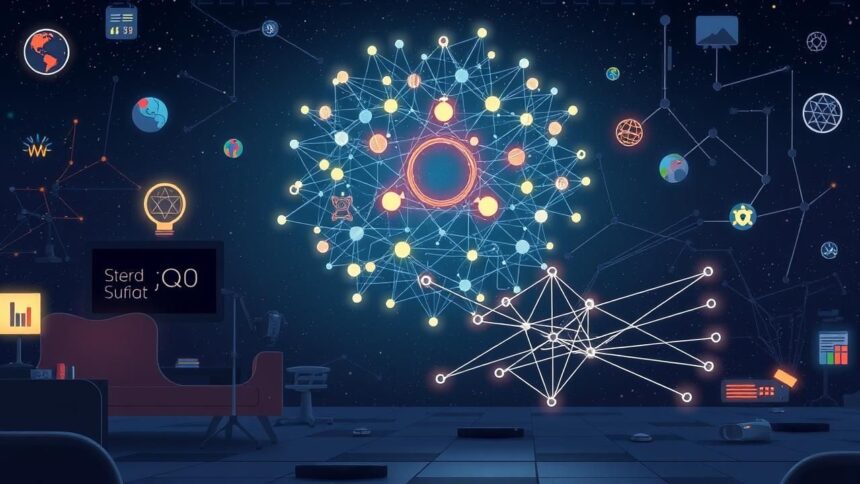Revolutionizing Machine Learning: The Power of Zero-shot and Few-shot Learning Explained
1. What is Zero-shot and Few-shot Learning?
Imagine you’re teaching a child to recognize animals. Normally, you’d show them pictures of various animals, tell them what each one is, and repeat the process until they can identify each animal accurately. This is similar to traditional machine learning, where models are trained on massive datasets to recognize patterns. But what if you could teach the child to recognize new animals they’ve never seen before, just by describing them? That’s the concept behind zero-shot and few-shot learning in machine learning.
Zero-shot learning allows models to generalize to new, unseen tasks or classes without any additional training. Few-shot learning, on the other hand, requires only a few examples to learn new tasks or classes. Both approaches are revolutionizing the field of machine learning by making models more adaptable and efficient.
2. Understanding Zero-shot Learning
2.1 The Basics of Zero-shot Learning
Zero-shot learning (ZSL) is a fascinating area of machine learning where a model is trained to recognize or perform tasks that it hasn’t been explicitly trained on. The key idea is to leverage prior knowledge or generalized understanding to make predictions about new, unseen data.
For example, consider a model trained to recognize cats and dogs. Using zero-shot learning, the same model could theoretically recognize an elephant, even if it has never seen one before, by understanding the general concept of animals and their distinguishing features.
2.2 How Zero-shot Learning Works
ZSL typically involves two main components:
- Attribute-based Models: These models learn a set of attributes or features that describe the objects in the training data. For instance, a cat might be described by attributes like “furry,” “four legs,” and “pointed ears.” When faced with a new object, the model uses these attributes to make predictions.
- Semantic Mapping: This technique involves mapping the training data to a semantic space, such as word embeddings or knowledge graphs. The model then uses this semantic information to generalize to new classes or tasks.
These approaches enable models to understand the underlying principles of the data, rather than relying solely on memorization.
2.3 Real-World Applications of Zero-shot Learning
Zero-shot learning has numerous practical applications, especially in scenarios where data is scarce or constantly changing:
- Image Recognition: Zero-shot learning can help recognize new objects in images without the need for extensive retraining. For example, a medical imaging system could identify rare diseases even if it hasn’t been specifically trained on those conditions.
- Natural Language Processing (NLP): In NLP, zero-shot learning can be used to understand and generate text in new languages or topics without additional training data. This is particularly useful in multilingual applications and sentiment analysis.
- Robotics: Robots equipped with zero-shot learning can adapt to new environments and tasks more efficiently, making them more flexible and versatile.
3. Mastering Few-shot Learning
3.1 The Concept of Few-shot Learning
Few-shot learning (FSL) takes adaptability a step further by focusing on scenarios where only a few examples are available for training. This is particularly useful in real-world applications where labeled data is limited but needs to be effectively utilized.
Think of it like teaching a child to recognize a specific breed of dog by showing them just a couple of pictures, rather than hundreds. Few-shot learning models aim to achieve similar levels of accuracy with minimal data.
3.2 Techniques in Few-shot Learning
Several advanced techniques are employed in few-shot learning to maximize the utility of limited data:
- Meta-learning: This approach involves training a model to learn how to learn. The model is exposed to a variety of tasks and learns to adapt quickly to new tasks with just a few examples. One popular method is Model-Agnostic Meta-Learning (MAML), which optimizes for fast adaptation.
- Transfer Learning: By leveraging pre-trained models on large datasets, few-shot learning models can transfer knowledge to new tasks with minimal additional training. This is especially effective in NLP and computer vision tasks.
- Data Augmentation: Techniques like data augmentation create multiple variations of the limited examples available, thereby artificially increasing the training dataset and improving model performance.
3.3 Practical Use Cases for Few-shot Learning
Few-shot learning has emerged as a game-changer in various industries, particularly where data is not abundant:
- Medical Diagnostics: In medical imaging, few-shot learning can help detect rare conditions by leveraging limited labeled data. This is crucial in personalizing treatment plans and improving health outcomes.
- Personalized Marketing: Marketers can use few-shot learning to understand and target niche customer segments with minimal data. This leads to more effective and personalized marketing campaigns.
- Autonomous Vehicles: In the development of autonomous vehicles, few-shot learning can help the vehicle adapt to new driving conditions or obstacles with just a few examples, enhancing safety and reliability.
4. Comparing Zero-shot and Few-shot Learning
4.1 Differences and Similarities
While zero-shot and few-shot learning share the goal of making models more adaptable, they differ in their approach:
- Zero-shot learning focuses on generalizing to unseen tasks or classes without any additional training, while few-shot learning leverages a few examples to achieve the same goal.
- Both techniques aim to reduce the dependence on large datasets, but few-shot learning offers a middle ground between traditional supervised learning and the more generalized approach of zero-shot learning.
The choice between the two depends on the specific requirements of the task at hand. Zero-shot learning is ideal for scenarios where no additional training data is available, while few-shot learning is suited for situations where a limited amount of labeled data can be utilized.
5. Challenges and Future Directions
5.1 Current Limitations
Despite their potential, zero-shot and few-shot learning are not without challenges. Some of the key limitations include:
- Data Quality: The performance of these models heavily relies on the quality and relevance of the few examples or attribute descriptions available. Poor-quality data can lead to inaccurate predictions.
- Model Complexity: These methods often involve complex architectures and training procedures, which can be computationally intensive and difficult to implement.
- Generalization Gap: There is a risk that models might not generalize well to completely new and unseen scenarios, leading to reduced performance in real-world applications.
Addressing these challenges requires ongoing research and innovation in model design and training techniques.
5.2 Future Directions
The future of zero-shot and few-shot learning is bright, with several exciting avenues for research and development:
- Hybrid Approaches: Combining zero-shot and few-shot learning with other techniques like reinforcement learning and transfer learning can lead to more robust and adaptable models.
- Interpretability and Explainability: Enhancing the interpretability of these models will make them more trustworthy and useful in critical applications like healthcare and finance.
- Scalability: Developing scalable solutions that can handle large-scale applications effectively will be crucial for widespread adoption.
6. Conclusion
Zero-shot and few-shot learning are transforming the landscape of machine learning by making models more adaptive and efficient. They offer powerful solutions for scenarios where data is limited or constantly changing, opening up new possibilities in various fields.
As we continue to explore and innovate in these areas, the potential applications will only grow. Whether it’s recognizing rare diseases, personalizing marketing strategies, or enhancing autonomous vehicle safety, zero-shot and few-shot learning are paving the way for more intelligent and versatile solutions.
So, the next time you’re amazed by a machine’s ability to recognize or perform tasks it has never seen before, remember the magic behind zero-shot and few-shot learning. It’s not just about recognizing animals; it’s about creating a future where machines can truly understand and adapt to the world around them.










